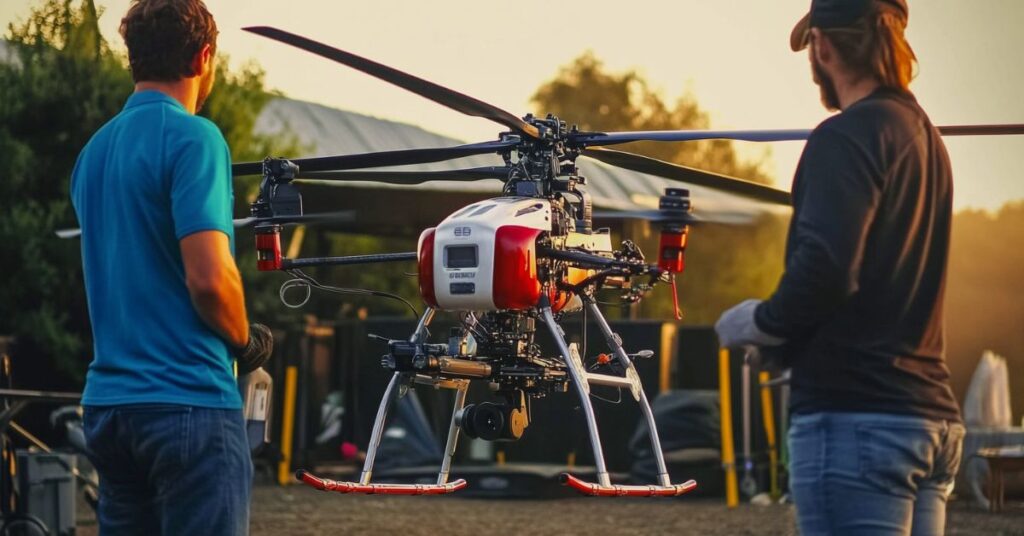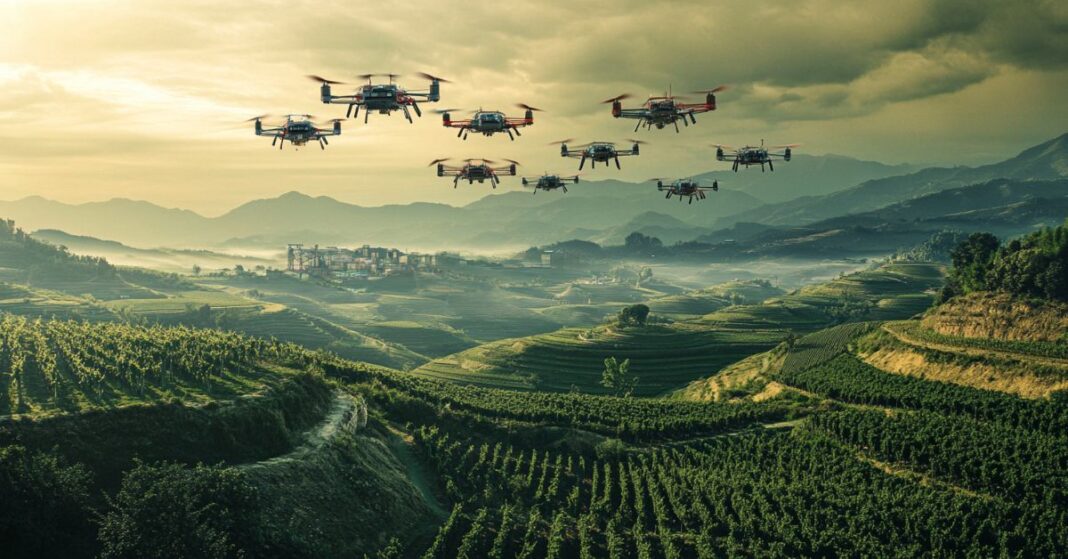The agricultural drone market is projected to expand rapidly, from USD 1.1 billion in 2022 to USD 7.0 billion by 2032, growing at a CAGR of 21.4% (Pangarkar, 2025). This exponential growth signals a critical shift in how agriculture is managed globally, with drones playing a pivotal role in precision farming. The use of drones in agriculture is transforming traditional practices by enhancing efficiency, reducing costs, and improving crop management. As this technology continues to evolve, it holds the potential to change farming and entire supply chains, impacting industries well beyond agritech.
Pioneering Drone Companies
Drones are becoming essential in agriculture, with key players like DJI and Parrot driving innovation across applications like crop mapping, soil analysis, and livestock monitoring. DJI’s specialized drones enhance farm management by providing real-time data, boosting crop yields, and reducing pesticide use (DJI, n.d.). Meanwhile, Parrot’s introduction of the ANAFI Ai, the first 4G UAV, allows for precise control over long distances, expanding possibilities for efficient farming practices (Parrot, n.d.).
A Phoenix Rises in Agricultural Drones?
PrecisionHawk, once a pioneer in agricultural drone technology, faced significant financial setbacks, including filing for bankruptcy in late 2023 (Crowe, 2023). However, recent reports indicate the company may be rising from the ashes, reclaiming its pivotal role in agritech. Now back at the forefront of shaping agricultural drone innovation, PrecisionHawk continues to lead in crop health analysis and infrastructure inspections. By combining drone hardware with advanced analytics software, its platform provides farmers with actionable data to optimize operations. As the company rebuilds, its growing influence on the agritech space makes it a key player to watch.
Market Innovations and Opportunities
The expansion of the agricultural drone market is supported by the increasing need for precision agriculture, which, involving technologies like GPS and automation, optimizes farm efficiency by precisely managing resources such as water, fertilizer, and feed to improve crop yields and reduce waste (U.S. Government Accountability Office, 2024). Yamaha has contributed to this expansion with its remotely piloted helicopters, originally designed for rice paddies but now used across various crops, including wine grapes and sugarcane (Yamaha Motor Corporation, n.d.). These drones are particularly useful in regions with large-scale farming operations, where traditional methods may be inefficient. By providing farmers with accurate data, drones allow them to manage crops more effectively, reduce costs, and improve their environmental footprint.

The technological advancements in drone applications have led to significant innovations, such as multispectral sensors and LIDAR, which are transforming crop health analysis and enabling better data collection. As a result, the agricultural drone market is poised for continued growth, with the integration of AI and IoT providing even greater opportunities for smarter farming practices.
Shaping the Future of Agriculture
Companies like DJI, Parrot, and Yamaha are leading the way in drone innovation, while startups such as AgriBotix (AgriBotix, 2025) are driving growth by offering data-driven solutions to farmers. As drones become more integrated into agriculture, their role in improving resource management, reducing environmental impact, and increasing productivity is becoming clearer.
The agricultural drone market is overcoming challenges like high costs and changing regulations through innovation and partnerships. As drones improve and become more accessible, their impact on farming will expand. Beyond agriculture, industries like logistics and data analysis are also benefiting from the shift toward automation and precision.
What This Means for You
As the agricultural drone market grows, industries that rely on precision technology, data collection, and automation will need to adapt. Understanding the developments in this space is crucial for staying ahead of emerging trends. Whether in farming, logistics, or environmental monitoring, drone technology is set to change the way businesses operate.
Follow me on LinkedIn for more on global industry trends.
References
AgriBotix. (2025). About us. AgriBotix. https://agribotix.com/
Crowe, S. (2023, December 27). Commercial drone company PrecisionHawk shutting down. The Robot Report. https://www.therobotreport.com/commercial-drone-company-precisionhawk-shutting-down/
DJI. (n.d.). About DJI. DJI. https://store.dji.com/
Parrot. (n.d.). About the company. Parrot. https://www.parrot.com/us/about-parrot
Pangarkar, T. (2025, February 2). Agricultural drone market transforming traditional by USD 7.0 billion, CAGR at 21.4%. Market.us. Published by EIN Presswire. https://www.einnews.com/pr_news/782675527/agricultural-drone-market-transforming-traditional-by-usd-7-0-billion-cagr-at-21-4
U.S. Government Accountability Office. (2024, January 31). Precision agriculture: Benefits and challenges for technology adoption and use (GAO-24-105962). U.S. Government Accountability Office. https://www.gao.gov/products/gao-24-105962#:~:text=Precision%20agriculture%20uses%20technologies%20such,data%20about%20their%20cows’%20health.
Yamaha Motor Corporation. (n.d.). Yamaha remotely piloted helicopters. Yamaha Motor Corporation. https://www.yamahamotorsports.com/Precision-Agriculture.php




